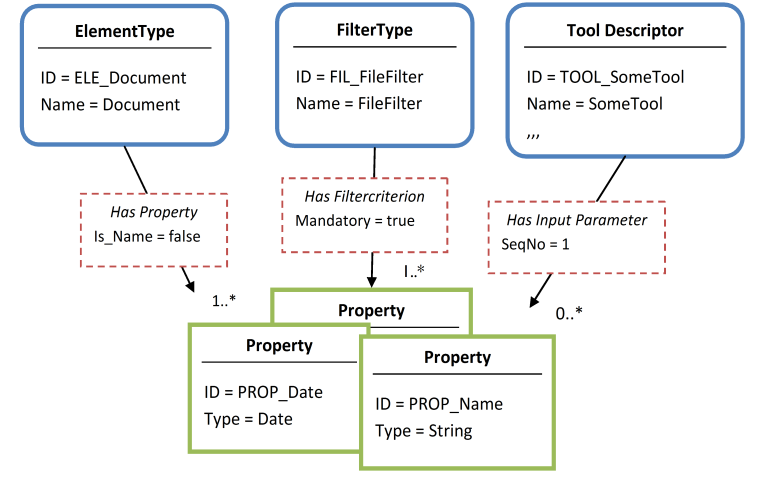Property
A Property in the data model is the description of an attribute whose value can be determined at run time.
For example, a "Text document" element type is assigned the properties “File name”, “Change date” or “Write protected”.
These characteristics are called Properties. They represent individual attributes, and describe how their values are to be interpreted. The property value can only be determined at run time.
For example:
| Property Data Model | Property Value Data |
|---|---|
| File name | MyDocument |
| Change date | 2014/05/25 |
| Write protected | True |
The table indicates the three properties that have been assigned to the “Text document” element type. The individual property values have different meanings. “File name” can contain any type of characters, “Change date“ is a date field and “Write protected” is a Boolean value. At run time, these values can be interpreted in different ways in a tool attachment, whereas an exact description of the properties is required in the data model.
Properties can be referenced from different model classes. Depending on the class in which the “File name” property is referenced it is processed differently. If the property is referenced from an element type, the “My Document” property value could be the labelling of the element. A tool can also reference the same property, and use it as an input parameter.
The meaning of a property only becomes clear in context with the reference. In most cases, Properties are referenced via Relationships, see the figure below.

Model classes (blue framed) reference Properties (green framed) through Relationships (red framed)